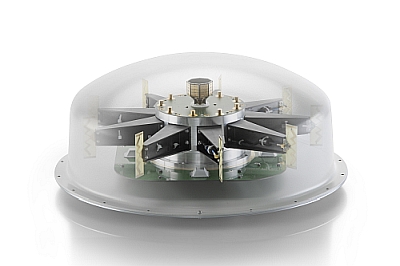- Narda Safety Test Solutions offers the second version of its automatic direction-finding antenna, which is distinguished by its extended frequency coverage.
- The ADFA 2 (automatic direction-finding antenna), used with the manufacturer’s SignalShark real-time receiver, enables signals to be located in the frequency range from 10 MHz to 8 GHz, compared to 200 MHz to 2.7 GHz for the ADFA 1 antenna.
The ADFA 2 antenna, which according to Narda has a good level of immunity to reflections, delivers measurement results within seconds. It is particularly suitable for mobile phone providers and regulatory authorities as well as military applications.
For mobile use, the ADFA 2 can be attached to the roof of a vehicle by means of a removable magnetic foot. It is connected by cable to the SignalShark real-time receiver. According to Narda, the ADFA 2 provides precise results without the need for the usual correction tables for the vehicles used. During the journey, the measurement technician can superimpose a thermal map on a map saved on the signal analyzer screen, as well as a view of the detected direction. The location software installed in the unit automatically indicates where the source of the interference is most likely to be located without the need for an external computer or other tool.

The heart of the ADFA 2 is an array of nine antenna elements (dipoles) arranged on a flat plane with a central omnidirectional reference antenna, which allows the measurement technician to observe the signal spectrum during direction finding. The principle of automatic direction finding using single channel receivers is based on the phase difference between the antenna elements. The nine dipoles are here measured against the central reference antenna. The greater the distances between them and thus the detected phase difference, the more reliable the bearings. As a result of the extended frequency range at both ends of the scale there is a new lower plane for the range from 10 to 200 MHz and an upper one for the range from 2.7 to 8 GHz. While the external diameter of only 480 millimeters is unchanged, these additional planes mean that the ADFA 2 weighs 6.5 kg, which is just 1 kg more than the ADFA 1 (200 MHz – 2.7 GHz).






